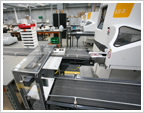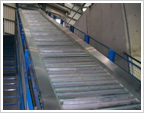Conveyor systems have become an important
mechanical handling equipment in majority of the industries and factories. They
are used for transportation of heavy or bulky materials. Conveyor systems allow
quick and efficient transportation of a wide variety of materials, which has
made them very popular in material handling and packaging industries. Many
kinds of conveying systems are available and are used according to various
requirements of various industries. Roller conveyors are also a type of
conveyor system.
Here are some factors you should keep in
mind when purchasing a conveyor rollers:
1.
When you are choosing conveyor
the first step is to conduct a detailed review of the conditions like product
conditions, transport volume conditions, work conditions, loading conditions.
2.
Choosing the width of the
roller accurately is very important, the width should be selected based on the
outer dimensions of the products being transported. It should be chosen by
adding at least 50 mm to the width of the bottom surface. Products whose bottom
surface is wider than the roller width can be transported as long as their
bottom surface is flat.
3.
The impact load on the rollers
varies with the work method associated with the loading conditions. Choose a
roller type that can withstand the impact and is reliable and durable.
4.
Choose the roller pitch so that
the bottom surface of the products being transported is always supported by at
least three or four rollers. Take special care to ensure that the load on any
given roller does not exceed the allowable load.
5.
The frame and leg pitch should
be chosen according to certain specifications that is on linear sections there
should be one leg every 1,500 to 2,000 mm. On the curves of 45 degree or
greater there should be one single leg in the middle of the section. For a more
detailed indication of leg spacing, convert the product weight per meter and
choose a leg pitch so that the allowable load is not exceeded.
6.
The slope of the conveyors
varies according to different factors such as the state of the bottom surface
of the product being transported and their construction and weight.




